#toxins
Explore tagged Tumblr posts
Text
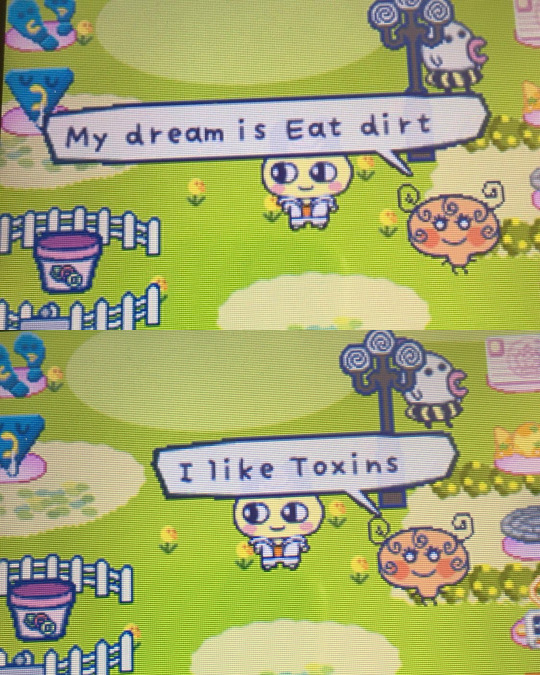
what are the chances she makes an appear in Tamagotchi Plaza?
#tamapalace#tamagotchi#tmgc#tamagotchiplaza#tamagotchi plaza#tamatag#virtualpet#bandai#nintendo#nintendoswitch#nintendo switch#eatdirt#eat dirt#toxins
599 notes
·
View notes
Text
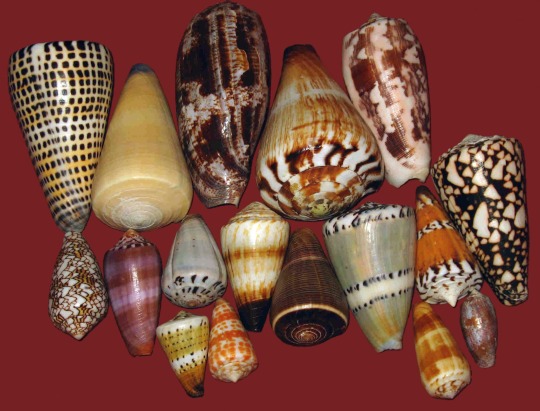
Cone Snails
#cone shells#cone snails#snails#sea snails#shells#seashells#creatures#marine biology#sea creatures#tropical animals#tropical#venomous#venom#poisonous#conidae#toxins#toxic creatures
582 notes
·
View notes
Text
Toxins, Venom, and Poisons in Historical Western Medicine: How Are We Not Extinct From Doing Some Of This To Ourselves?
This piece is an involuntary piece inspired by @writing-with-sophia's awesome post "Poison list", which is an accurate and succinct list of commonly known (and ancient!) poisons, venoms, and toxins that have been and were used for causing poisoning in ancient and recent history. I wanted to write this because what struck me by their post crossing my dash was, the sheer number of poisons listed that were - and even still are - used as mainstays for healthcare around the world throughout the ages!
OBLIGATORY DON'T BE A DUMBASS PSA: If you're planning on incorporating these poisons into your HISTORICAL-era writing, it's also important to remember that many of them were used for medicinal purposes at one time, too, and it's great you're interested in learning about the subject! And also, you shouldn't try ANY of these! I will not tell you how to do it at home if you DM me, so don't! You are not appropriately trained to do it! You will harm or kill yourself and possibly your loved ones if you fuck around with any of these and it will be 100% your fault and you absolutely should feel bad bout it! I've seen some of you idiots believe 4chan posts about making home-grown crystals using recipes for actual mustard gas and seen you being wheeled into the ER on the news! I will not feel bad if you get yourself hurt if you screw around with any of these plants, elements, or animals!
Resource blog plugs and PSA over, now for the Hilariously Poisonous Medicines:
If you're writing something that's meant to take place prior to the advent of our more modern understanding of poisons, venoms, and toxins, factoring in "this is toxic to me NOW, but what about 500 years ago?" can add a lot of opportunities for interesting plot elements to your story.
These can include someone accidentally poisoning themselves with a toxic drug or substance that wouldn't have killed them if they'd handled it properly - like tansy? Grows all over the place in Europe and England? That'll kill you if you harvest it too late in the season, but it's good for intestinal parasites when it's harvested early in the year and processed right.
Did the lady's maid really kill her mistress with belladonna? Or was she trying to secretly help her mistress get rid of an unwanted pregnancy?
The protagonist's children can't survive to make it to weaning age! Is the wetnurse a poisoner, or does the milkman hide that he sells sour milk by pouring Borax into it so no one could taste it and has no idea he's killing his clients' babies?
Nuance and cultural mores regarding historical views about poisons and toxins can make writing even more fun, dynamic, and interesting! Explore 'em!
Just... please don't try any of this crap yourself. You will poison yourself, it will hurt, you will die, and you will hurt the entire time you're dying. Using OP's master list alone, here's the flip side of these lethal beasts through the eyes of our distant ancestors who believed illness was caused by "vapors", "bad air", and "imbalanced humors":
Hemlock:
Used across multiple different cultures in history. When properly administered to treat a disease, poison hemlock was used to treat asthma, whooping cough, bronchitis, joint/bone pain, muscle cramps, and insomnia. Hemlock was most often used as a sedative and antispasmodic.
Arsenic:
Arsenic is a heavy metal, and so has been used in everything from making specialty dyes for wallpapers (Scheele's green is the most infamous arsenic-based paint; Queen Victoria once had a guestroom in her palace redone with Scheele's green wallpaper. The first dignitary to stay there had to be carried out and taken to emergency care after breathing astronomical amounts of arsenic dust from the wallpaper's paint), to medicine. Arsenic was especially commonly used in history to treat skin ailments ranging from acne, to psoriasis, to syphilis sores. It was also sometimes prescribed for menstrual cramps, upset stomachs, colic, and arthritis, among many, many other things.
Cyanide:
Uh... I have literally never found any evidence of cyanide in medicine, outside of its use in modern medicine as part of certain chemical lab tests for measuring urine ketone bodies that involve no contact with a patient whatsoever. Cyanide literally works in less than a few seconds to render your entire body incapable of absorbing OR using oxygen in your lungs or already existing in your blood. Cyanide is really only good at making things that breathe not breathe anymore.
Nightshade:
There are a lot of different "nightshades", so being specific is essential here. Potatoes are nightshades. Tomatoes are nightshades. Calling anything a "nightshade" does not inherently mean it's lethally toxic. Belladonna is probably the most notorious of the "deadly" nightshades, but to this day, is still used medicinally, and would actually be seen as a health and cosmetic mainstay in historical fiction, especially if your setting is in Italy!
Belladonna is an Italian portmanteau for "beautiful woman", because tinctures (water-based drops) of belladonna were commonly used by Italian women as eyedrops to dilate their eyes and appear more attractive, aroused, and desirable. Today, belladonna's eye-dilating effects are still used by optometrists to dilate the pupils! Belladonna has been, and still sometimes is used as an NSAID, general painkiller, motion sickness treatment, asthma medication, and even as a treatment for IBS.
Ricin:
As OP said, Ricin is derived from the toxin found in Castor Beans, and is surprisingly new as an official "the only reason this is made is to make someone dead" poison. Not only is ricin a popular "nobody would think to test for this!" choice in mystery/thriller writing, but it has been used for political assassinations in real life before. Georgi Markov, a Bulgarian anti-Communist dissenter and writer, was killed in 1978 with a 1.7mm diameter ricin-coated pellet shot into his thigh muscle by an unidentified assailant using a modified umbrella as a gun. He died 4 days later.
Historically, castor OIL has been used for medicinal purposes, especially for treating constipation, inducing labor in pregnancy, and as a topical skin moisturizer. If you've ever watched the opening scene in Disney's "Peter Pan", when the childrens' mother is trying to give them a spoonful of medicine each, she's actually giving them castor oil! Castor oil tastes really bad (so much so that flavorings like cinnamon were often added to try to muffle the taste), so the childrens' reluctance and disgust at their mom making them take their medicine is very realistic for the era the movie came out in!
Strychnine:
Another lethal poison that started life as a medicine/food additive. Strychnine is no longer used medicinally at all today, but historically, it was used to stimulate the heart, treat bladder and bowel incontinence, and limb palsy. Strychnine is a deadly-powerful muscle stimulant that, as a poison, causes horrifyingly painful full-body strictures (spasms) and destroys the cardiovascular system. (Fun fact: Strychnine and hydrochloric acid were historically mixed into cheap vodka to make knock-off gin, especially during the Georgian Era in England if the brewer didn't have or couldn't afford juniper berries!)
Snake Venom:
Seriously, do your research before you write an actual, real snake species using venom they don't produce! The Big 3 Forms Of Snake Venom are: Hemotoxic, Neurotoxic, and Cytotoxic. Specific snake species exclusively generate the same kind of venom (so a hemotoxic snake will ALWAYS produce baby snakes that also make hemotoxic venom). Aristotle himself wrote in 380 BC that certain snake venoms could be applied for treating fevers, smallpox, and leprosy, and there is even some evidence in the historical record prior to the 1800s that different cultures have experimented throughout the eons with using venom for converting into antivenom, but I've never found a source citing anyone making a successful form of antivenom until around the 1850s.
Digitalis:
OP really nailed the important thing about Digitalis, and that is it's cardiac benefits for certain people - particularly for treating congestive heart failure. Vincent van Gogh was actually prescribed epilepsy medication that likely contained Digitalis, aka Foxglove, and there are some prevailing theories about van Gogh's love of bright yellow paint as being either caused or exacerbated by the symptoms associated with digitalis use, which can cause an attraction to and increased visual sensitivity to the color yellow. In several portraits, including one of his own psychiatrist, van Gogh shows subjects presented alongside foxglove flowers. Digitalis is absolutely lethal if consumed or taken without expert guidance, however, because it's the mother ingredient of Digoxin. Digoxin isn't used as frequently as it used to be a few decades ago, but it's still used and prescribed today for certain forms of heart failure and heart disease. Digoxin was also, at one time, was also sometimes used to induce chemical abortions.
Lead:
Dear god, lead. Not only is it so slow to kill you that you'll think that the only way to manage your symptoms is with more lead, but lead poisoning can be a life-long crisis for a person who is regularly exposed to it. Humans have used lead for everything from plumbing, to paint, to our cutlery, to cosmetics, to medicine. While yes, it is very possible to ingest enough lead in a single sitting to die within hours or days, most sufferers of lead poisoning experience it for years or decades before the symptoms become obvious. Some archaeologists believe that the Romans used lead cutlery because lead has a unique reaction when we lick it: when you have lead coating your tongue, it makes EVERYTHING you eat suddenly taste 10x better. I learned this myself from going target-shooting with my mom at a gun rage as a teenager, inhaled gunsmoke (which contains lead), and went for lunch immediately after. Even though I was just eating a $5 meal from In-N-Out, my burger tasted so good I thought I was gonna have to change my pants. When I asked the rangemaster at the target place about it later, he literally said, "Oh yeah, lead makes the worst cooking taste like heaven."
The ancient Romans ate a lot of rotten, spoiled, and sour food, and so lead would've made it easier to eat it back then. But the neurological effects of lead poisoning are nightmarish. It's suspected that, in America, the #1 reason we had so many active serial killers in the country from the 1940s-2000s was because of leaded gasoline. Ever since leaded gasoline was banned? Serial and random violent crime rates have dramatically gone down, especially in metropolitan cities. Ancient Rome, too, gradually became an increasingly violent city as its population went up and its reliance on lead did. We're only just now starting to figure out how toxic lead actually is, so go nuts with using it as a plot element regarding subjects like "Why Are You Like This?"
Mercury:
Mercury is also known as quicksilver, because in spite of being a heavy metal, the temperature at which it melts into a liquid is very, very low compared to most other metals. The first Emperor of China, Qin Shi Huang, was rumored to be so obsessed with the notion of immortality that he would send his doctors on doomed voyages around the world searching for a legendary substance that would, indeed, make him immortal. Legend has it that some doctors who were tasked with the job found out about the last guys, and produced mercury before Emperor Qin Shi Huang and cried, "Here it is! I got it!" so they wouldn't end up doomed to drown at sea. Qin Shi Huang became so obsessed with ingesting and medicating himself with mercury that, when his legendary tomb was being constructed, he had a small-yet-accurate-to-scale map of China+the known world about the size of a football field with every body of water full of fountains of running mercury in his burial chamber. His tomb was rediscovered in the last couple of decades after archaeologists found suspiciously high levels of mercury in the soil on top of a "hill" that had been sitting in the countryside untouched for thousands of years. It turned out to be Qin Shi Huang's long-lost tomb.
Since those days, mercury has closely been associated in early medicine as a sort of cure-all, since it literally kills anything it touches (including people). Captain Blackbeard himself, the most notorious pirate in Western history (Western specifically; google who Zheng Yi Sao was), was known or widely believed to be a syphilis sufferer, and desperately sought infusions of mercury from ships he'd capture (and the doctors onboard) to treat it, believing like everyone did that mercury could cure syphilis. It can't. They just didn't understand back then that syphilis starts off surface-level, and then eats your brain years after the initial infection.
Aconite:
Again, ridiculously toxic outside of specific medicinal applications that still aren't safe today! Aconite, or wolfsbane, has historically been used as a heart sedative (for slowing the heart), diuretic, painkiller, and even used to induce sweating. Evidence of wolfsbane being used for medicinal purposes has been spotted here and there over thousands of years throughout the Greek, Roman, and Byzantine Empires, but its original use came about in Ancient Greece for hunting and culling wolves by poisoning bait-food with it. That form of hunting died out long before the European Middle Ages, but the name "wolfsbane" stuck. Mostly because in the Middle Ages, a lot of people believed werewolves were a huge problem, and kept wolfsbane handy to deter said werewolves.
Thallium:
Today, thallium is mostly used in the production of camera and eyeglass lenses. Before its toxicity was known about, it wasn't strange to hear of thallium being used topically to treat fungal infections like ringworm. Thallium was also sporadically used in treating typhus and tuberculosis, along with a wide array of sexually transmitted diseases.
This list doesn't even touch the tip of the toxic iceberg when it comes to the sheer quantity of hilariously dangerous toxins people have, or still continue, to use for medicinal purposes! In a Victorian-era English London middle-class townhouse setting alone, there were dozens and dozens of ways to poison or otherwise harm yourself just by going about your daily life. So, if you've got a period piece you're working on, or are just bored, you can pick an exact date and time in our history and learn just how terrifyingly comfortable our ancestors were with upsettingly dangerous substances and home remedies. You can also watch a massive docuseries, called "Hidden Killers" and hosted by historian Suzannah Lipscomb, among other historians and archaeologists, which deep-dives into the hidden and unknown dangers of living in eras from Tudor-Era England, to the Post-WWII Reconstruction Age.
As a final note: I am NOT bashing Chinese or Eastern medicinal practices here, and in fact deliberately have gone out of my way to not include any references toward culturally-sanctioned medicinal practices in Eastern and Southeastern Asia. This post is specifically related to the history of WESTERN medicines and their associated history. I am not, nor have I ever been, a doctor of any traditional Eastern medicinal practices, and do not pretend to know better. Sinophobes are unwelcome in my blog space.
#creative writing#historical medicine#writing reference#poison#toxins#long post#very long post#really long post#writing-with-sofia#sinophobes dni#if i've offended the OP of the first post with this i sincerely apologize#i got excited and it gave me a case of diarrhea-level infodumps
127 notes
·
View notes
Text
The increased use of a chemical compound to replace TNT in explosive devices has a damaging and long lasting effect on plants, new research has shown. In recent years, TNT has started to be replaced with DNAN, but until now very little was known about how this substance impacts the environment and how long it can remain in the soil.
Continue Reading.
35 notes
·
View notes
Text
A reason to be skeptical of claims that doing X will clear you of all toxins is that toxins aren't a coherent class of chemicals and don't have anything in common with one another aside from being bad for people.
Like the categorization of weeds, there is also a contextual element to it; something that our body needs can also be toxic to it in large amounts or in certain situations; water toxicity exists, and oxygen is notoriously toxic and our bodies have safeguards to prevent receiving damage from it. (Oxygen also caused the biggest extinction in the history of the planet, possibly killing up the 99% of all life.)
In order for a process to be able to remove all of a certain kind of chemical, those chemicals all have to be similar to one another, but toxins can often have more in common with the non-toxic chemicals in your body than they do to one another, so it it binds them, it's going to also bind the good stuff as well. (Charcoal for example is notorious for absorbing everything indiscriminately, taking meds and nutrients along with it.)
24 notes
·
View notes
Text
CHEMTRAILS - WATCH THE SKIES
CHEMTRAILS IN OUR SKIES
Graphene
Nanoparticles
Aluminum
Barium
Heavy metals
Chem web fibers
Human Plasma
Bacteria
"Alzheimer’s dementia, Parkinson’s disease, and Lou Gehrig’s disease (ALS) are strongly related to exposure to environmental aluminum"
Saaaauce 🔥
Neurologist Warns Aluminum in Chemtrails Could Cause “Explosive Increase in Neurodegenerative Diseases”
☁️🌨️🌪️
#chemtrails#poisoning#crimes against humanity#watch the skies#danger#warning#climate change#weather control#artificial rain#blocking the sun#cloud seeding#heavi metals#toxins#nanoparticles#human plasma#health#truth#please share#wwg1wga
15 notes
·
View notes
Text
AROMATHERAPY FOR TOXIC MASCULINITY
Is your masculinity making you unable to cry, resulting in toxin build-up? Put capsaicin essential oil in your humidifier or essential oil diffuser, for an easy natural tear duct cleanse. Bye bye toxins!
14 notes
·
View notes
Text
Why is everything getting recalled lately? My favorite drink isn’t even safe!
According to the article I found:
Snapchill has initiated a voluntary recall of hundreds of its products after they were found to potentially be harboring grounds for the toxin botulinum, which can cause botulism, a sometimes fatal form of food poisoning.
According to the recall notice posted on the website of the Food and Drug Administration (FDA), the manufacturing process used for the products led to low acid levels in the canned foods. Low acid conditions can lead to the growth and production of botulinum.
I’ll leave the full article below in case anyone wants to read it:
Link to Article
#food recall#coffee#toxins#botulinum toxin#why is every food and drink being recalled#stay safe when eat/drinking please#if your food looks weird and smells weird I definitely would toss it#physical health#FDA#food and drug administration
51 notes
·
View notes
Text

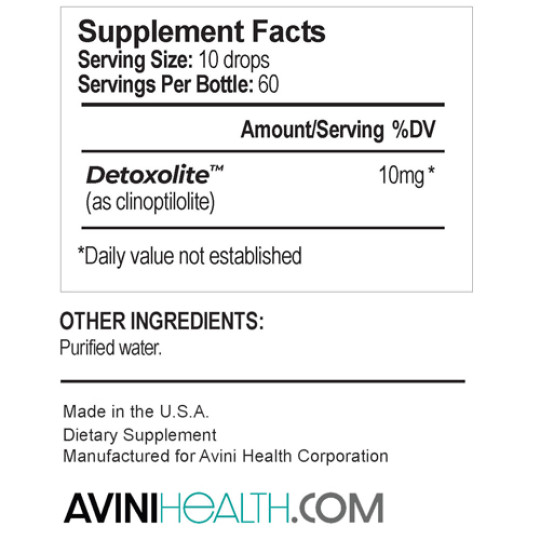

Cell Defender is the only micronized and activated zeolite colloidal suspension in the world (Detoxolite™). It is the original colloidal clinoptilolite zeolite product and is supported by over a dozen clinical studies - including trials published in peer-reviewed journals. The zeolite is like a tiny, negatively-charged cage that pulls in a variety of toxic substances in the body and forces their excretion. This includes heavy metals (mercury, lead, etc...) as well as volatile organic compounds (benzene, dioxin, etc..). This process results in a healthier environment throughout the body as a cleaner and healthier body fixes itself. Cell Defender has been clinically proven to: Help remove heavy metals, toxins, and other substances from the body; Support a healthy immune system; and Help balance pH levels in the body. Cell Defender is 100 percent natural and non-toxic - and safe for long-term use.
#detox drink#detoxification#zeolite#health and wellness#health#heavy metals#heavy metal detox#toxins#healing#health & fitness
9 notes
·
View notes
Text
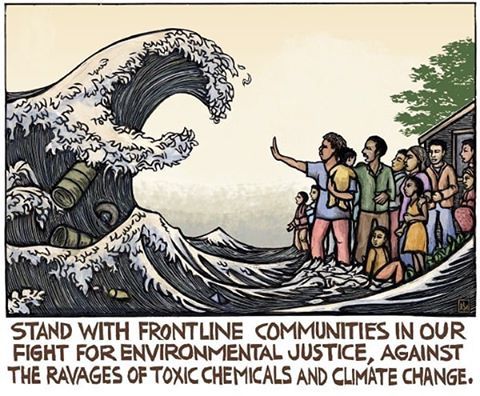
Chapter 7. Polluted Politics? Confronting Toxic Discourse, Sex Panic and Eco-Normativity by Giovanna Di Chiro
“Stereotypes and lies lodge in our bodies as surely as bullets. They live and fester there, stealing the body.”—Eli Clare
Queer ecology as defined by Mortimer-Sandilands (2005, 24) “both about seeing beauty in the wounds of the world and taking responsibility to care for the world as it is”. (200)
Environmental justice constructs an eco-politics that defines the environment as our communities: the places where ‘we live, work, play, and learn’ (200). Environmental justice activists embrace inhabited/built places---cities, villages, reservations, agricultural fields, workplaces, poor and low-income neighborhoods next to hazardous industrial facilities as environments worthy of recognition and protection (Di Chiro 1996)
There has been rising environmental anxiety that surrounds cultural fears of exposure to chemical and endocrine-disrupting toxins especially as it relates to the troubling and destabilizing of normal/natural gendered bodies of humans and other animal species aka the “chemical castration” or the “feminization of nature” (Cadbury 1998; Hayes 2002)--rising fears that we are “swimming in a sea of estrogen” (Raloff 1994b, 56; Sumpter and Jobling 1995 173) as a consequence of rising levels of estrogenic, synthetic chemical compounds emitted into our water, air and food known as estrogenic pollution (ova-pollution). (201)
Pop-science warning about the ‘instability of maleness’—warns that the rising incidences of male-to-female gender shifts and intersex conditions observed in the ‘lower’ species of animals, such as frogs, fish, and salamanders, represent the newest ‘canaries in the coalmine’ portending an uncertain fate for human maleness and for the future of ‘normal’ sexual reproduction (Robert 2003) (201) also anti-toxins discourse has concerns about estrogenic chemical toxins disrupting/preventing/disturbing ‘normal’ prenatal physiological development and natural reproductive processes, leading to rising cases of infertility and producing disabled, defective, and even monstrous bodies (201)…

What can develop is a “sex panic” that resuscitates familiar heterosexist, queerphobic, and eugenics arguments classifying some bodies as not normal: mistakes, perversions, burdens (I would add ‘freaks’)…under the guise of laudable goal/progressive goals, a certain type of anti-toxics environmentalism mobilizes knowledge/power of normalcy and normativity and reinforces compulsory social-environmental order based on a dominant regime of what and who are constructed as normal and natural (Davis 1995; Garland-Thompson 1997; McRuer 2006).
Disability becomes an environmental problem and lgbtq people become disabled—the unintended consequences of a contaminated and impure environment, unjustly impaired by chemical trespass. (202) The true scope of the mortality and morbidity of POPs (persistent organic pollutants) becomes distorted by alarmist focus. This fixation ends up de-emphasizing and worse--naturalizing and normalizing other serious health problems associated with POPs that are on the rise: breast, ovarian, prostate and testicular cancers, neurological and neurobehavioral problems, immune system breakdown, heart disease, diabetes and obesity (202).
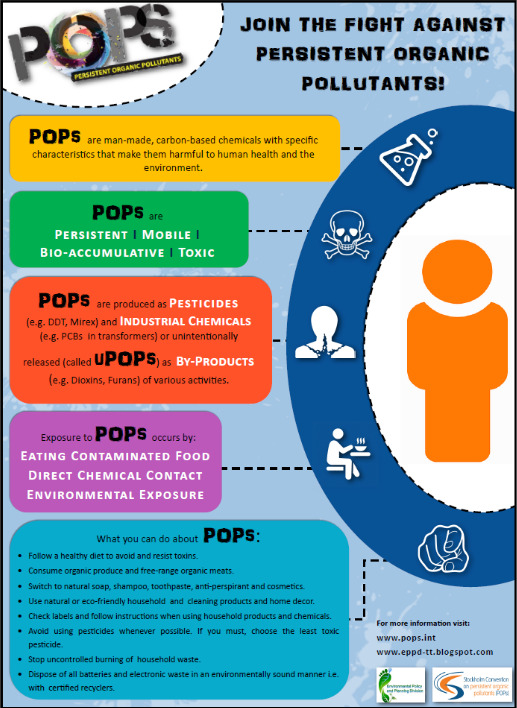
There is good reason for alarm concerning the continued use and accumulation of toxic chemicals that are wreaking havoc on the health and reproductive possibilities of the living world. Our cumulative exposures to endocrine disruptors, carcinogens, neurotoxins, asthmagens, and mutagens in our normal, everyday lives from our daily contact with plastic water bottles, shampoos, and kitchen cleaners to insect repellents, food preservatives, and factory farmed meats, among others, are most certainly putting at risk the health of our own bodies and our earth. (210) But where should the critical attention lie?
The hyperfocus on the world turning into hermaphrodites participates in a sexual titillation strategy summoning the familiar ‘crimes against’ nature’ credo and inviting culturally sanctioned homophobia while at the same time sidelining and naturalizing ‘normal’ environmental diseases such as cancer (211).
--
Environmental theory and politics in the US have historically mobilized ideas of the normal, to determine which bodies and environments/landscapes embody the distinctly American values of productive work, rugged individualism, masculinity, independence, potency, and moral virtue upon which environmental advocacy movements should be based (Haraway 1989; Cronon 1991). Critical histories of U.S. environmentalism have revealed the capitalist, patriarchal, colonialist, heteronormative, eugenicist, and ableist histories underlying its “progressive” exterior (Boag 2003; Darnovky 1992; Evans 2002; Gaard 2004; Jaquette 2005; Sutter 2001).
Eco-normativity (or eco[hetero]normativity) appear in alarmist discourse in the anti-toxins arm of the environmental movement. Their alarm about contaminants effect on sex/gender appeals to preexisting cultural norms of gender balance, normal sexual reproduction and the balance of nature. The use of “anti-normal” “anti-natural” in antitoxins discourse is highly questionable and risks reinforcing the dominant social and economic order (the forces actually responsible for environmental destruction and toxic contamination of all our bodies and environments) by naturalizing the multiple injustices that shore it up”…and thus creates what the author terms, polluted politics.
#queer ecologies: sex nature politics desire#econormativity#heteronormativity#critical ecology#queer ecology#ecology#environmental contamination#persistent organic pollutants#toxins#anti toxins#eugenics#ecofeminism#environmental politics#ecological science#environmental science
42 notes
·
View notes
Text

Mexican Brand Insect Fluid package label - 1915.
#vintage illustration#vintage labels#vintage packaging#typography#vintage typography#public health#insecticides#toxins#roach food#ddt#roaches#insects#lice#bedbugs#insect killers#bugs#bug killers
15 notes
·
View notes
Text
if a Psychiatry can't sell you any Drug's, they're fired.
that's why they always push these extremely toxic neurotoxic pills on your ass, the questions they asked at the mental health facilities are all bullshit, they're not learning anything not really cuz all the pills are the same really they're just a different type of neurotoxin.
&
people that disagree with this shit have never taken any psychotics or anti depressants in their life.
this shit is the most destructive and existence the reason why I'm making this post is if you're not a happy person or you go through a lot of shit don't go to a psychiatrist !
just trust me they don't make you feel better they don't solve your problems and they are fucking pun intended psychotically expensive !
&
they don't solve any of your problems they don't they don't help with anything they help lighten your wallet at the bow they can fucking do well on one side they do give you permanent brain damage they do give you chemical lobotomies that completely fuck up destroying damage your brain permanently even one pill with more than enough to do serious harm to you is that going on to the fucking Street somewhere and smoking methamphetamine just one fucking time the damage is already done you are already deeply fucked !
but the pills are to what I've learned multiple times are in they are a processed, alternate version of methamphetamine. and so you would think that's good ?
NO ! ! !
this is the most weaponized chemistry I've ever seen in my entire fucking life and they give this shit to children all the fucking time they give these fucking chemical the body they haven't stopped selling lobotomy they just change the method !
&
Rebranded !
#Mental Health#Insanity#Psychiatry#Pill's#Toxins#Heavy Metal#Forever Chemical#Forever Chemicals#Neurotoxin#Lobotomy#Chemical#Brain Damage#Permanent#Decaying Mind#DNA Damage#Toxic#Dementia
9 notes
·
View notes
Text
Cancer-causing flame retardants found in everyday things like plastics, furniture, fabrics and electronics can be sucked up by the skin and absorbed into the bloodstream in 24 hours, scientists have found. A state-of-the-art 3D-printed skin model was used in an exposure study in the journal Environment International, shedding fresh light on the potential risks these pervasive pollutants pose. Sweatier skin sucks up more of the chemicals—polybrominated diphenyl ethers (PBDEs)—than dry skin when microplastics they've been added to come into contact with the skin.
Continue Reading.
87 notes
·
View notes
Text









Shay Davies @jettthespeeddemon
#livi’s moodboards#aesthetic#moodboards#moodboard#oc#ocs#toxic#poison#poisonous#flower#flowers#wolfsbane#aconite#monkshood#purple#indigo#Violet#toxins
7 notes
·
View notes
